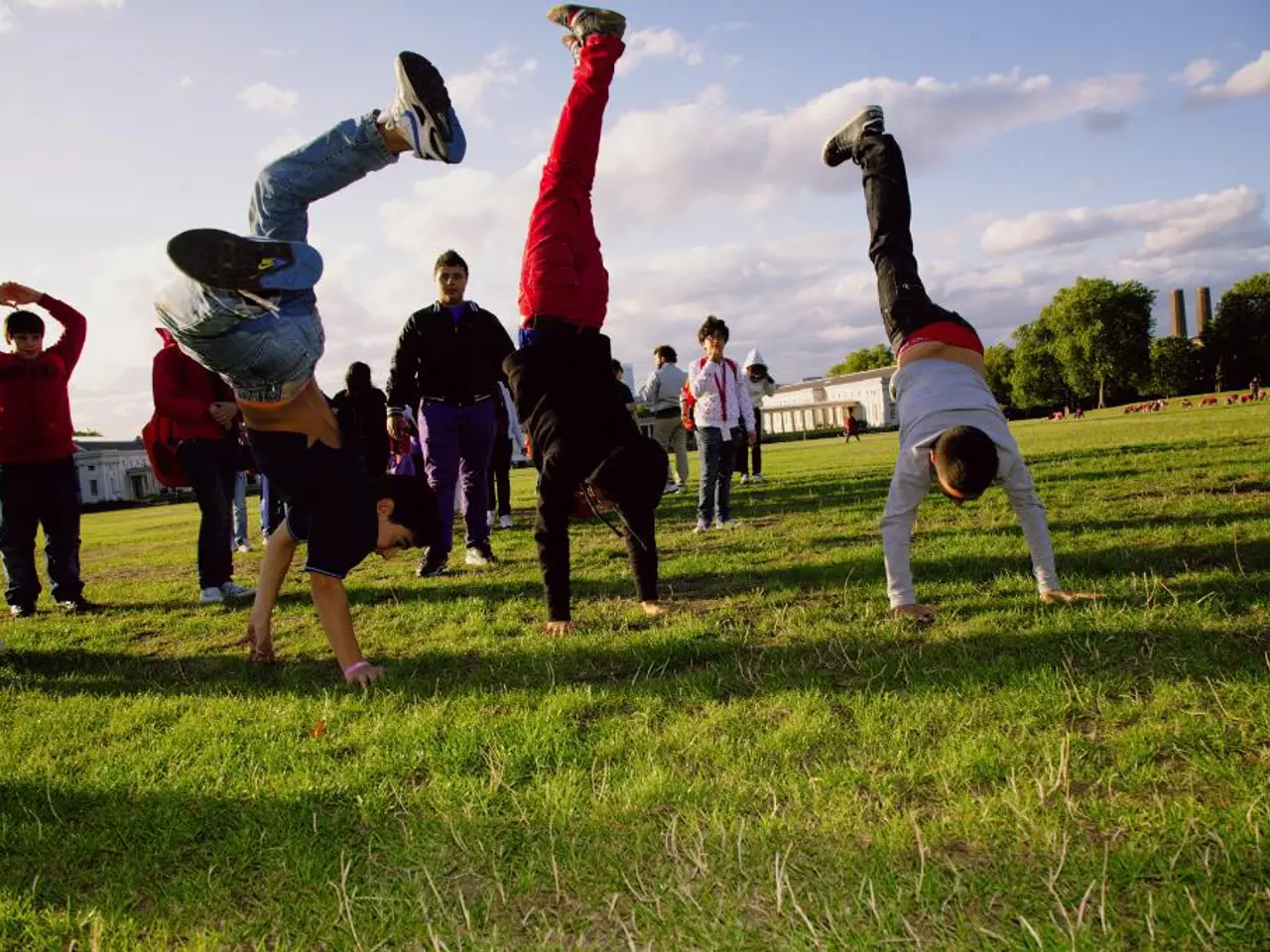Hypoglycemia after physical exertion: Recognizing the symptoms and protection measures
Exercise-induced hypoglycemia (EIH) is a condition that can affect both people with diabetes and those without, causing low blood glucose levels during or after physical activity. This article aims to shed light on the causes, symptoms, prevention, and treatment of EIH.
EIH occurs when the body's energy needs during exercise are not met due to insufficient glucose availability. This can be a result of inadequate carbohydrate intake before or during exercise, exercise timing relative to meals or insulin, and overexertion. People with diabetes are more susceptible to EIH due to increased insulin sensitivity and glucose uptake by muscles during exercise.
For those with diabetes, it's crucial to monitor blood glucose levels before, during, and after exercise. If levels are low or borderline, consuming carbohydrates before activity can help prevent hypoglycemia. Complex carbohydrates, such as whole grains and fruits, are recommended due to their slow absorption rate, providing more stable blood sugar levels.
Individuals without diabetes may experience reactive hypoglycemia during exercise, often related to the timing and type of carbohydrate intake. Consuming high glycemic index carbs too early before exercise may cause a spike and subsequent drop in blood sugar, leading to symptoms like dizziness or fatigue. Eating carbohydrates closer to exercise start time or during exercise reduces this risk.
Hydration also plays a significant role in preventing hypoglycemia-related symptoms. Drinking water or carbohydrate-containing sports drinks supports glucose stability and fluid balance. Lightheadedness post-exercise can often be mitigated by eating carbohydrates roughly three hours before activity and during prolonged or intense workouts.
Common causes of EIH include intense workouts, already having low blood glucose, insulin sensitivity, or taking insulin. The American Diabetes Association (ADA) recommends checking blood glucose levels before exercising for people with diabetes. Other factors that contribute to EIH include using insulin or other diabetes medications, not eating enough, not consuming enough carbohydrates, exercising immediately after a meal, being sick, drinking too much alcohol without food, and triggering a considerable spike in insulin.
Symptoms of EIH can be severe and include weakness, shaking, dizziness, confusion, anxiety, fainting, seizure, coma, and death. If a person experiences these symptoms, they should seek emergency medical attention immediately. In cases where symptoms are milder, such as shakiness or dizziness, consuming 4 ounces of juice or eating a piece of toast can help.
In rare cases, a doctor may recommend a surgical intervention, such as removing a part of the pancreas to slow insulin production. Chronic EIH can be treated with diazoxide. Not eating enough food to match activity levels can also cause hypoglycemia in people with diabetes.
It's essential to note that EIH is not necessarily a sign of diabetes, but people with diabetes have additional risk factors for hypoglycemia. A 2019 review notes that anaerobic exercise, such as high-intensity interval training (HIIT), may reduce the risk of hypoglycemia in people with diabetes. Untreated diabetes causes hyperglycemia, which is high blood glucose.
For people without diabetes, preventing EIH involves gradually building up to new exercise routines, eating regular meals, and avoiding drinking alcohol before a workout.
In conclusion, maintaining stable blood glucose levels is crucial for preventing EIH. This involves monitoring blood glucose levels, consuming appropriate carbohydrates at optimal times, staying hydrated, and adjusting diabetes medication as needed with professional guidance.
- Exercise-induced hypoglycemia (EIH) can affect individuals with diabetes and those without, causing low blood glucose levels during or after physical activity.
- People with diabetes are more susceptible to EIH due to increased insulin sensitivity and glucose uptake by muscles during exercise.
- For those with diabetes, it's crucial to monitor blood glucose levels before, during, and after exercise to prevent hypoglycemia.
- Complex carbohydrates, such as whole grains and fruits, are recommended for people with diabetes due to their slow absorption rate, providing more stable blood sugar levels.
- EIH can occur when the body's energy needs during exercise are not met due to insufficient glucose availability.
- Individuals without diabetes may experience reactive hypoglycemia during exercise, often related to the timing and type of carbohydrate intake.
- Common causes of EIH include intense workouts, already having low blood glucose, insulin sensitivity, or taking insulin.
- Hydration plays a significant role in preventing hypoglycemia-related symptoms, with drinking water or carbohydrate-containing sports drinks supporting glucose stability and fluid balance.
- Symptoms of EIH can be severe and include weakness, shaking, dizziness, confusion, anxiety, fainting, seizure, coma, and death.
- Chronic EIH can be treated with diazoxide, and in rare cases, a doctor may recommend a surgical intervention.
- Untreated diabetes causes hyperglycemia, which is high blood glucose.
- For people without diabetes, preventing EIH involves gradually building up to new exercise routines, eating regular meals, and avoiding drinking alcohol before a workout.




